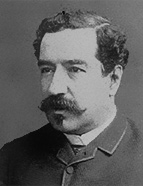

The experience G. Pereira gained within the CMN, his extensive knowledge of work produced in his areas of knowledge, his connections with individuals in the sector, and the positions he held, along with his growing advocacy for heritage, position G. Pereira as one the intellectuals who laid the groundwork for the Sociedade Nacional de Belas Artes National Fine Arts Society (SNBA), which resulted in contributions that included assisting with the selection of objects from Évora for inclusion, in 1882, in the "Ornamental Art Exhibition" at the National Museum of Fine Arts (1884, Lisbon) and organising an 1889 exhibition at Évora's public library, inaugurated by the royal family. Then still known as the ‘Grémio Artístico’, the first General Assembly (GA) was held on 27 March 1890, where G. Pereira was elected vice-president of a board led by J. Ramalho Ortigão. This role encouraged him to travel abroad in 1891, following brief visits to Spain dating back to at least 1879. He subsequently visited several major museums, libraries, and archives in Spain, France, and England, where he found inspiration for certain works. Simultaneously, he wrote short stories and narratives and toured the outskirts of Évora in search of archaeological remains, particularly megaliths, possibly after his visit to archaeological sites in Minho on the eve of the first archaeological conference organised in Portugal (Guimarães, 1877) and whose impressions he writes in notebooks filled with drawings, reflecting the eclecticism of his heritage interests.
G. Pereira's work in art history and heritage conservation enabled him, along with watercolourist Enrique Casanova and art critic José Pessanha, to embark on a brief editorial project Arte Portuguesa: revista de arqueologia e arte moderna [Portuguese Art: a journal of archaeology and modern art] published in Lisbon from January to June 1895, aimed at promoting the literary and artistic movements within the country. An experience he would later repeat, namely in A Arte e a Natureza em Portugal [Art and Nature in Portugal] published in Porto between 1902 and 1908, alongside intellectuals such as art historian Joaquim de Vasconcelos. Together with Vasconcelos and philologist Carolina Michaëlis, he would go on to write the Biblioteca Internacional de Obras Célebres [The International library of Famous Literature] published in 1911 by the International Society (Lisbon).
This work is financed by national funds through FCT - Foundation for Science and Technology, I.P, in the scope of the projects UIDB/04311/2020 and UIDP/04311/2020.
